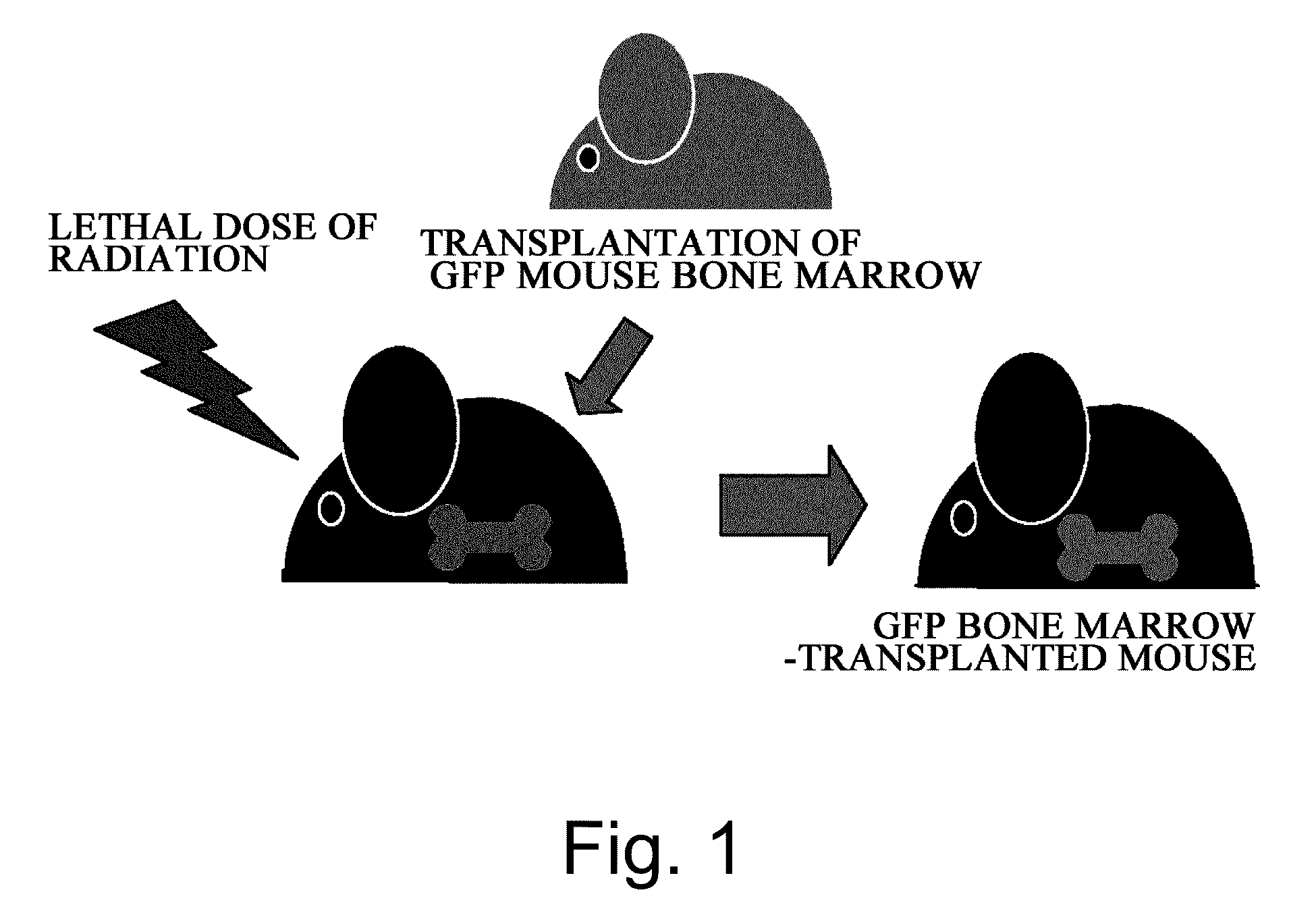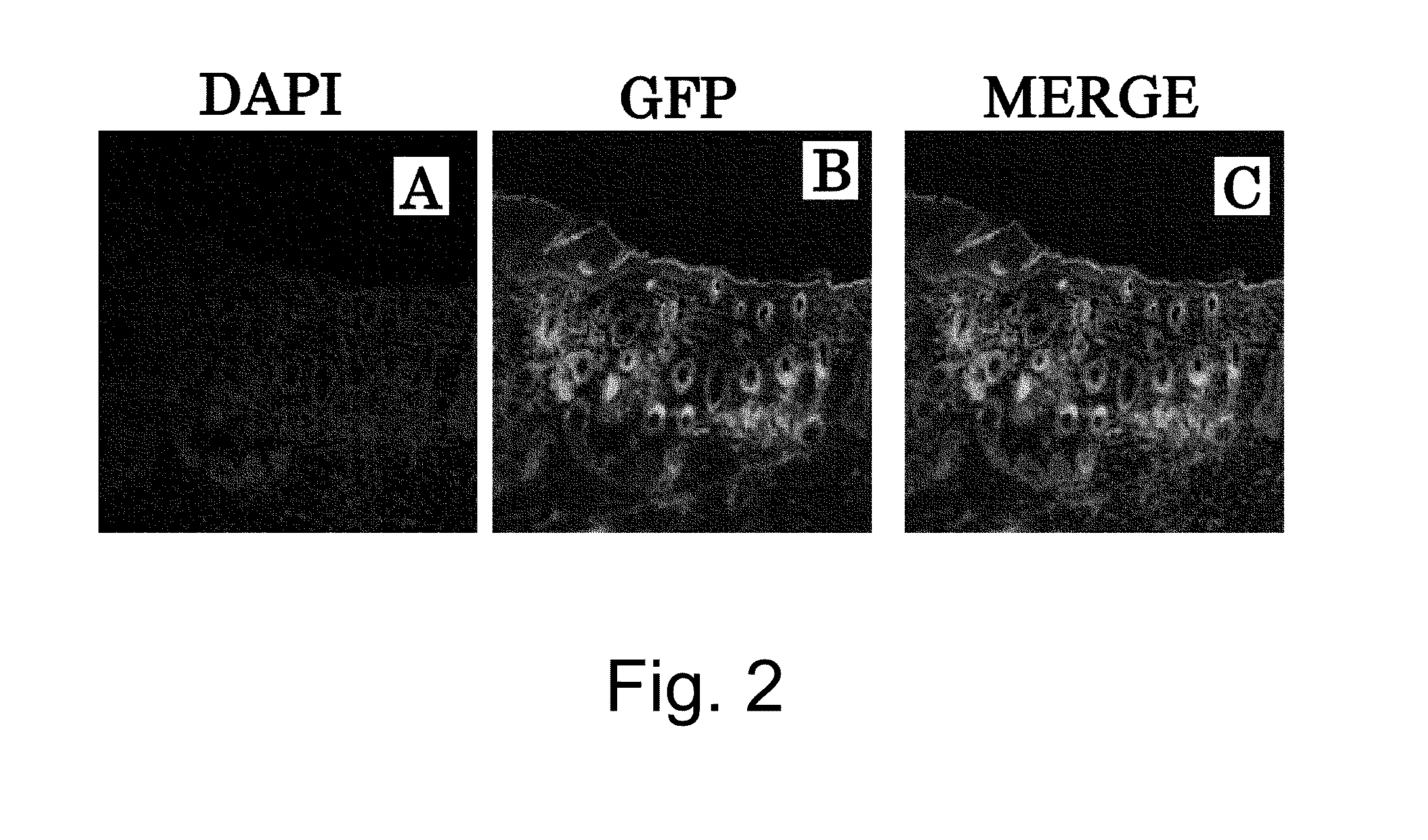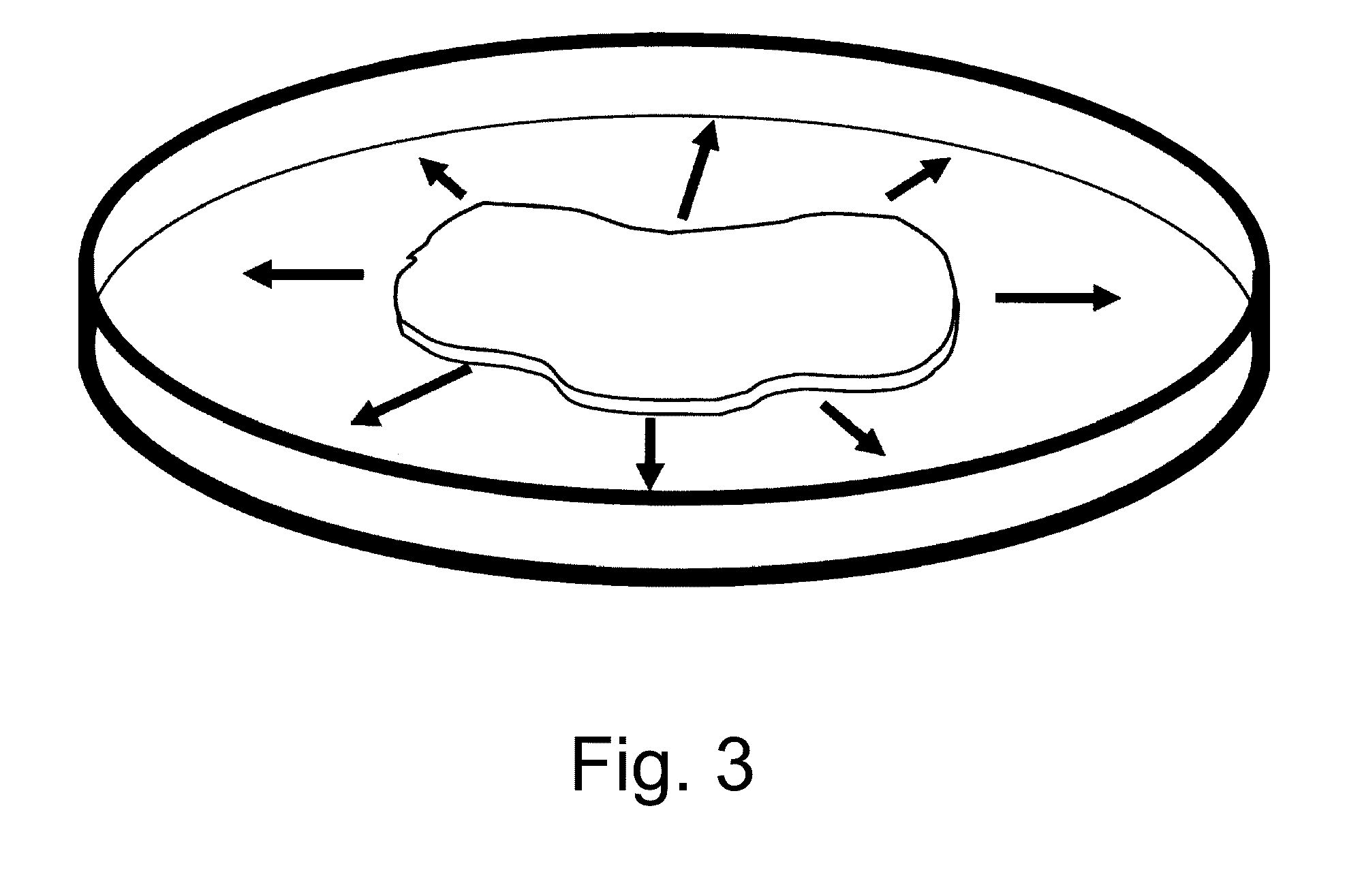Pharmaceutical Agent for Promoting the Functional Regeneration of Damaged Tissue
a technology of functional regeneration and pharmaceutical agents, applied in the direction of tissue culture, drug compositions, peptides, etc., can solve the problems of no active research treatment, malignant neuroglioma has a worse prognosis, and the neuroglioma that has developed from cerebral parenchymal cells cannot be completely removed
- Summary
- Abstract
- Description
- Claims
- Application Information
AI Technical Summary
Benefits of technology
Problems solved by technology
Method used
Image
Examples
example 1
Purpose: To assess contribution of bone marrow-derived cells to the functional regeneration of in vivo grafted skin tissue
Methods: Studies were conducted to achieve the above purpose.
(1) The degree at which bone marrow-derived cells contribute to the functional regeneration of grafted skin was assessed using a system of in vivo skin grafting in GFP bone marrow-transplanted mice. Specifically, male C57BL / 6 mice (six to eight weeks old) were irradiated at a lethal dose (10 Gy), and green fluorescent protein (GFP) transgenic mouse-derived bone marrow cells (5×106 cells / 0.1 ml of physiological phosphate buffered saline, pH 7.4) were transplanted into the mice via the caudal vein immediately after the irradiation (FIG. 1).
(2) After the engraftment of transplanted bone marrow cells (six weeks) was confirmed, neonatal mouse (female) skin was transplanted to the dorsal skin of the resulting GFP bone marrow-transplanted mice.
(3) After confirming the engraftment of grafted skin and sufficient...
example 2
Purpose: To identify bone marrow-derived tissue stem cell-inducing factors in skin tissue extracts
Methods: By the method described below, study was conducted to identify factors responsible for mobilizing bone marrow mesenchymal stem cells, which were predicted to be released from excised skin under hemostatic condition.
(1) Bone marrow cells were harvested from the thighbones or crural bones of C57BL / 6 mice to obtain mouse bone marrow-derived mesenchymal stem cells. The cells were seeded into a cell culture dish with D-MEM (Nacalai) supplemented with 10% fetal bovine serum as a culture medium and cultured at 37° C. under 5% carbon dioxide gas. When the cells were grown to occupy an area of 70 to 100% relative to the bottom of the culture dish, the cells were detached from the culture dish using 0.25% trypsin / 1 mM EDTA (Nacalai). The cells were then passaged under the same culture conditions. After at least five passages, the adherent cells were isolated and further cultured, and ana...
example 3
Purpose: To assess the therapeutic effect of S100A8 on cutaneous ulcer in normal and diabetic mice
Methods: Recombinant S100A8 protein was administered to cutaneous ulcer model mice to assess its therapeutic effect on ulcer. Test mice used were: C57 / B16 mice transplanted with bone marrow cells expressing GFP, and BKS.Cg-m+ / +Leprdb / J (db mice), which are diabetes model mice. Cutaneous ulcers with a diameter of 6 mm were formed on the skin of the mice. When cutaneous ulcer is formed in mice, the surrounding skin close to the skin defect rapidly shrinks. In this experiment, to create a therapeutic model for skin defect, in which skin defect is treated not through shrinkage but by covering it with regenerated skin, a silicone rubber disc with an outer diameter of 10 mm, inner diameter of 6 mm, and thickness of 0.5 mm was fixed at the skin defect site to the skin surrounding the ulcer using an adhesive agent for skin surgery (Aron alpha A) and nylon suture to prepare a model for treating ...
PUM
| Property | Measurement | Unit |
|---|---|---|
| affinity | aaaaa | aaaaa |
Abstract
Description
Claims
Application Information
 Login to View More
Login to View More - R&D
- Intellectual Property
- Life Sciences
- Materials
- Tech Scout
- Unparalleled Data Quality
- Higher Quality Content
- 60% Fewer Hallucinations
Browse by: Latest US Patents, China's latest patents, Technical Efficacy Thesaurus, Application Domain, Technology Topic, Popular Technical Reports.
© 2025 PatSnap. All rights reserved.Legal|Privacy policy|Modern Slavery Act Transparency Statement|Sitemap|About US| Contact US: help@patsnap.com



